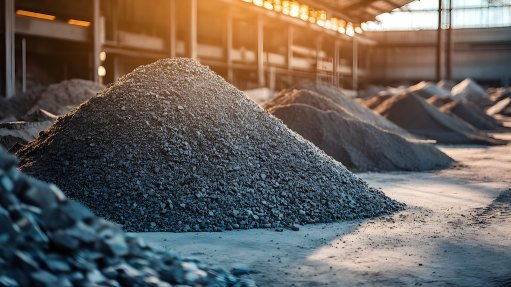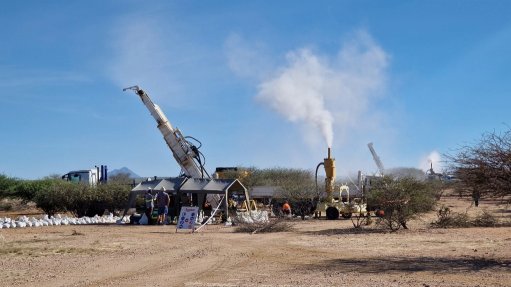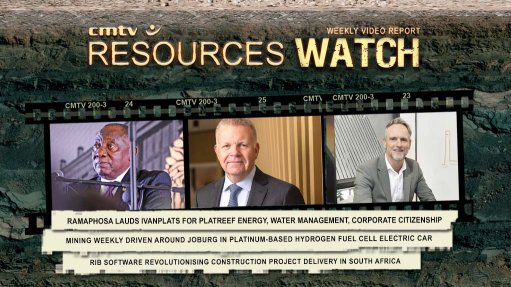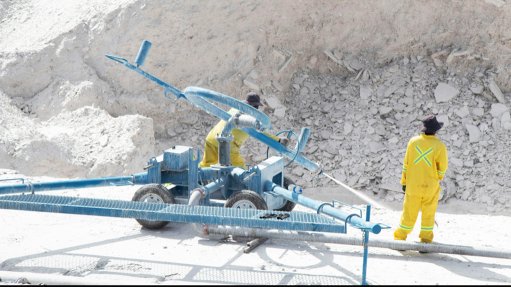Opinion: Moving from hype to reality – how green hydrogen’s role in the energy transition is evolving
In this article, EY Africa strategy and transactions leader Quintin Hobbs writes about the growth in green hydrogen demand and the related growth in electrolyser demand.
It is now clear that green hydrogen will play a pivotal role in the global energy transition, especially in hard-to-decarbonise heavy industry sectors that include chemical manufacturing, steelmaking, cement and transport.
Even though broad adoption is not likely in the short term, there is consensus among different energy experts that there will be exponential growth in green hydrogen demand.
Much has been spoken about the need for large-scale renewable energy production to drive this, but another increasingly important factor is significant demand for electrolysers. Electrolysers are devices that use electricity to split water or other components into their constituent elements through electrolysis.
Electrolysis technology is rapidly developing through a combination of technological advancements, scale and funding to meet forecast demand and capacity. However, there are concerns about the limited availability of the critical minerals used in electrolyser manufacturing to match demand. These materials include platinum, palladium, iridium, nickel and rare materials.
Adding further complexity to this are increasing geopolitical tensions and resource nationalism. This could exacerbate supply concentration risk, potentially increasing electrolyser costs and dampening deployment.
Despite a range of applications for green hydrogen, a lack of significant industrial demand to date is also impacting the timing of demand for electrolysers.
Government, industry stakeholders and educational institutions therefore need to collaborate to bridge existing skills gaps in the sector and help increase awareness of its importance.
Developments in the green hydrogen manufacturing process mean the price competitiveness of green hydrogen will be reaching parity with alternatives such as natural gas sooner than previously expected.
There are three drivers behind this: decreasing renewable energy costs, decreasing electrolyser capital expenditure (capex) costs and increasing carbon taxes.
Renewable costs have further decreased with additional reductions expected to take place over the coming several years, albeit at a slower pace.
DECREASING ELECTROLYSER CAPEX COSTS
The future costs of green hydrogen production will influence the speed of the hydrogen economy and major aspects of decarbonising energy systems from China to the US.
These electrolyser costs are critical for producing more green hydrogen. We expect a rise in electrolyser production capacity, disruptive technology innovation and an increase in average module sizes to drive an about 50% drop in electrolyser capex between 2023 and 2050.
There are five factors set to drive hydrogen electrolyser market growth:
Green hydrogen demand will rise rapidly in the coming years. EY predicts that demand will rise at a 10.3% compound annual growth rate over the 2020 to 2030 period. Furthermore, government funding from the European Union and other countries has offered impetus for a rapid acceleration in electrolyser production capacity.
Rapid acceleration anticipated in electrolyser production capacity. Despite manufacturers building out more production capacities in Europe, the US, China, and India, manufacturers do have concerns that oversupply will see a relatively low share of projects reaching financial investment decisions.
Unit costs of alkaline and proton exchange membrane (PEM) electrolysers are falling. This is fuelled by a rise in production capacity and technology innovations.
Rising stack efficiency and larger module sizes are driving costs down. Stack components comprise up to 50% of the overall electrolyser system cost. With technology advancements, stack sizes will increase, resulting in improved efficiency which would reduce costs.
Actual deployment is slower than announced projects. This is due to the huge costs and risks involved. This means that developers are building electrolyser capacity in a phased approach.
TAKING ACTION
Our extensive analysis reveals three key actions for electrolyser original-equipment manufacturers (OEMs), hydrogen producers and investors. All this is underpinned by contracting, deploying and standardisation efforts.
Overall, there is still a positive market outlook when it comes to green hydrogen and electrolyser production. This is built on expansionary policies and government support globally that will help drive an electrolyser cost decrease of about 50% over the stated 2023 to 2050 period.
This means green hydrogen stakeholders must proactively take strategic decisions today to prepare for the future electrolyser market trends. Electrolyser OEMs should engage in long-term supplier contracts and partnerships, along with customer contracts, to ensure a steady supply and order book.
Moreover, OEMs can look to move away from bespoke products to produce standardised units to reap benefits of economies of scale.
For their part, hydrogen producers need to secure long-term contracts with electrolyser OEMs rather than waiting for a price breakthrough. This will help safeguard against any supply shocks as the green hydrogen market is expected to grow. Producers can also look to collaborate with other hydrogen producers to increase knowledge diffusion, boost operational synergies, and drive market awareness and adoption (to reduce production costs further).
And for investors, the lower capex outlook will enhance the appeal of the hydrogen sector. EY expects alkaline and PEM technologies to remain dominant in the market with an approximate 90% combined market share until 2050. Investors should therefore continue to focus on these two technologies to benefit from returns.
It is now clear the industry is moving from hype to reality. We are seeing concrete developments that will fuel demand and lead to project feasibility. These developments are not linear and we expect to see much volatility in price developments as projects continue on the path towards bankability. There will be winners and losers.
Article Enquiry
Email Article
Save Article
Feedback
To advertise email advertising@creamermedia.co.za or click here
Press Office
Announcements
What's On
Subscribe to improve your user experience...
Option 1 (equivalent of R125 a month):
Receive a weekly copy of Creamer Media's Engineering News & Mining Weekly magazine
(print copy for those in South Africa and e-magazine for those outside of South Africa)
Receive daily email newsletters
Access to full search results
Access archive of magazine back copies
Access to Projects in Progress
Access to ONE Research Report of your choice in PDF format
Option 2 (equivalent of R375 a month):
All benefits from Option 1
PLUS
Access to Creamer Media's Research Channel Africa for ALL Research Reports, in PDF format, on various industrial and mining sectors
including Electricity; Water; Energy Transition; Hydrogen; Roads, Rail and Ports; Coal; Gold; Platinum; Battery Metals; etc.
Already a subscriber?
Forgotten your password?
Receive weekly copy of Creamer Media's Engineering News & Mining Weekly magazine (print copy for those in South Africa and e-magazine for those outside of South Africa)
➕
Recieve daily email newsletters
➕
Access to full search results
➕
Access archive of magazine back copies
➕
Access to Projects in Progress
➕
Access to ONE Research Report of your choice in PDF format
RESEARCH CHANNEL AFRICA
R4500 (equivalent of R375 a month)
SUBSCRIBEAll benefits from Option 1
➕
Access to Creamer Media's Research Channel Africa for ALL Research Reports on various industrial and mining sectors, in PDF format, including on:
Electricity
➕
Water
➕
Energy Transition
➕
Hydrogen
➕
Roads, Rail and Ports
➕
Coal
➕
Gold
➕
Platinum
➕
Battery Metals
➕
etc.
Receive all benefits from Option 1 or Option 2 delivered to numerous people at your company
➕
Multiple User names and Passwords for simultaneous log-ins
➕
Intranet integration access to all in your organisation





















